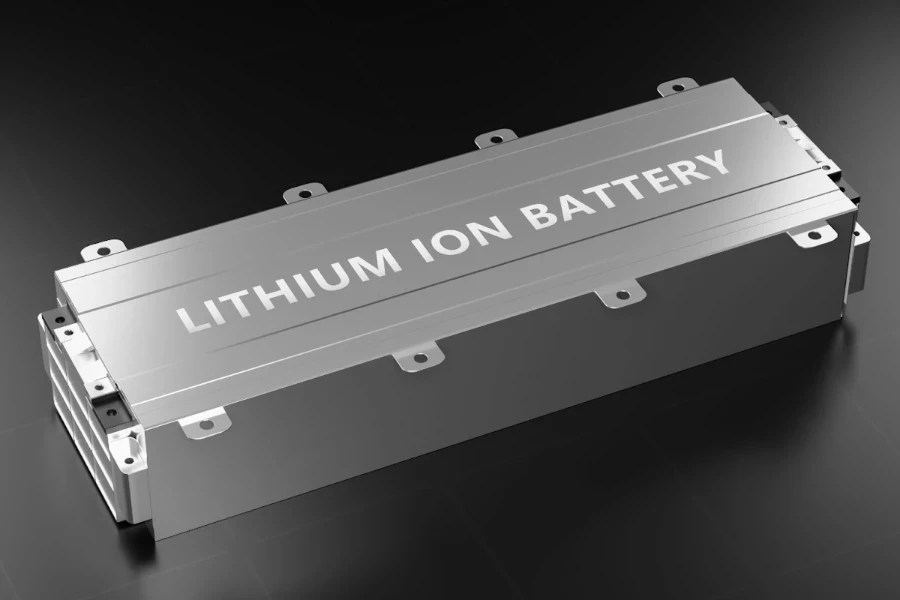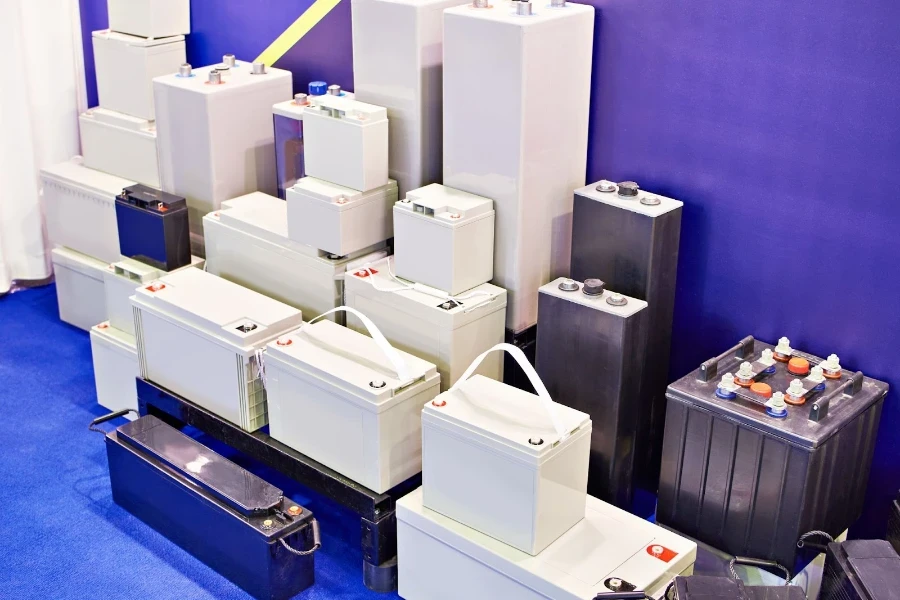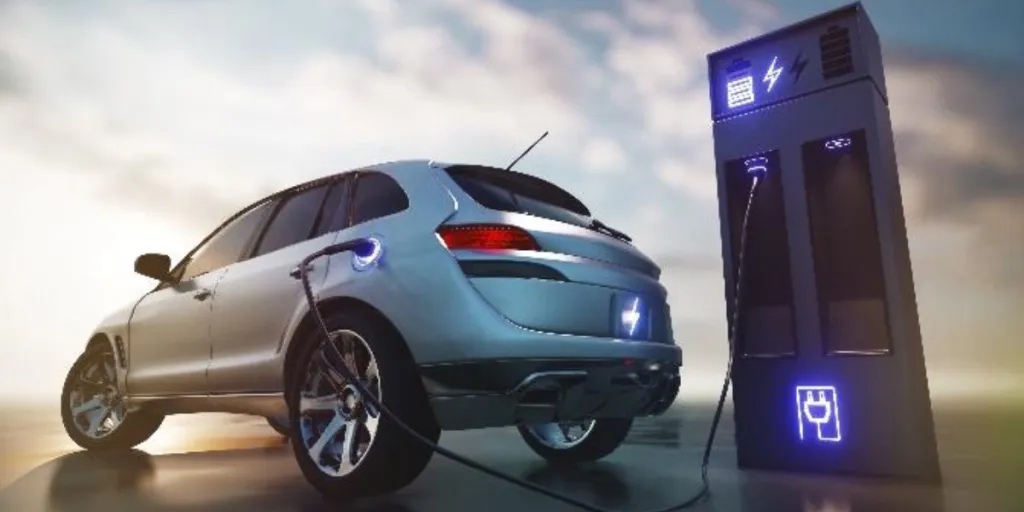Electric vehicles (EV) offer us an alternative and more sustainable energy solution for traveling, and EV batteries are the core component of electric vehicles. Because of this, demand for EV batteries is growing worldwide, and this presents a great opportunity for retailers to cater to this trend.
In order to select the best batteries on the market, it is important to get to know the basic concepts and characteristics of EV batteries as well as some key considerations you should take into account when selecting batteries. And that’s where this guide has you covered—so read on for a buyer’s guide to the best EV batteries in 2024!
Table of Contents
What is an electric vehicle battery?
Key factors to consider when selecting EV batteries
The bottom line
What is an electric vehicle battery?
Electric vehicle batteries are the heart of modern electric vehicles, responsible for storing and supplying the energy needed to power the car. These batteries are predominantly lithium-ion due to their high energy density and longevity. Lithium-ion batteries operate on the principle of moving lithium ions between the anode and cathode during charging and discharging cycles.
Power requirements, capacity, and discharge currents of the battery are crucial determinants of an EV’s performance. For instance, the power demands of the electric vehicle dictate the maximum and continuous discharge currents of the battery, directly influencing the vehicle’s acceleration capabilities, hill-climbing performance, and driving range.
The design of electric car batteries also takes into account the physical size and available space within the vehicle. The layout of the battery pack must fit the specific space constraints of the electric vehicle, which can impact the arrangement and total capacity of the batteries.
For example, a Tesla car’s energy consumption of 0.2 kWh per kilometer can be used to estimate the required battery capacity for different driving range needs. Additionally, the operating temperature range and chemical composition of the battery are vital, as these factors affect efficiency and performance under various environmental conditions.
Lithium-ion and lithium iron phosphate batteries, for instance, have distinct performance characteristics at different temperatures, which should be considered based on the EV’s intended operating environment.
Key factors to consider when selecting EV batteries

Driving range requirement
The driving range requirement is one of the most critical parameters in electric vehicle battery selection. The range requirement directly affects the choice of battery capacity: the higher the capacity, the longer the theoretical range of the EV.
The key to range requirements is how to balance the capacity of the battery with the overall weight and cost of the vehicle. A high-capacity battery can provide a longer range.
To give a simple example of the impact of driving range demand, Suppose there is an electric vehicle with a battery capacity set at X kilowatt-hours (kWh). If the car can travel Y kilometers per kWh under ideal conditions, then its theoretical maximum driving range would be X times Y.
For example, if an electric car is equipped with a 50-kWh battery and can travel 5 kilometers per kWh, then its theoretical maximum driving range would be 250 kilometers.
While this calculation provides a theoretical range, the actual driving range may be affected by a number of factors, such as driving style, road conditions, vehicle load, weather conditions, etc. Therefore, the actual performance of the battery may differ from the theoretical calculation.
Battery power and discharge current
Battery power and discharge current are another key parameter of electric vehicle (EV) batteries, and they have a direct impact on EV performance, especially acceleration and hill climbing performance.
Battery power refers to the maximum amount of energy that a battery can deliver per unit of time, usually measured in kilowatts (kW). A high-power battery can release a large amount of energy quickly, thus providing EVs with stronger acceleration and better hill climbing ability.
The powertrain design of an electric vehicle and the power matching of the battery are critical, as the battery needs to be able to meet the energy demands of the motor at peak performance.
Discharge current is the strength of the current in a battery during discharge and is measured in amperes (A). There are two types of discharge current for batteries: maximum discharge current and continuous discharge current.
Maximum discharge current is the highest current that a battery can deliver in a short period of time and is usually required for acceleration or hill climbing; continuous discharge current is the current that a battery can continue to deliver under normal operating conditions.
Suppose an electric vehicle requires a peak power of 150 kW and the battery is rated at 400 volts. Based on the power equation P (power) = V (voltage) x I (current), we can calculate the maximum current required: I (current) = P (power) / V (voltage) = 150 kW / 400 V = 375 A.
This means that the battery needs to be able to supply at least 375 amps of current for a short period of time to meet the peak power demand of the car.
Operating temperature and battery chemistry type
Operating temperature and battery chemistry type are another critical parameter for electric vehicle (EV) batteries, and they can have a significant impact on battery performance, safety, lifetime, and the environment in which it is applied.
Operating temperature
The operating temperature of a battery is the range of temperatures over which the battery can operate properly. This parameter is critical to battery performance because temperature can significantly affect the battery’s charging efficiency, discharging capacity and life.
Under extreme temperature conditions, the battery may not function properly and may even present a safety risk. For example, excessively high temperatures may cause the battery to overheat, damage, or cause a fire; while excessively low temperatures may reduce the effective capacity and discharge efficiency of the battery.
Battery chemistry type

The chemistry type of a battery determines its basic characteristics, including energy density, weight, cost, raw materials and operating temperature range. The most common types of electric vehicle batteries are lithium-ion (Li-Ion) and lithium iron phosphate (LiFePO4) batteries.
Lithium-ion (Li-Ion) batteries: These batteries are widely used in electric vehicles due to their high energy density and long life. They typically have a wide operating temperature range, but performance may degrade at extreme temperatures. Li-Ion batteries may be at risk of overheating at high temperatures, while at low temperatures they may result in reduced charging efficiency.
Lithium Iron Phosphate (LiFePO4) Batteries: These batteries are known for their excellent thermal stability and safety. They perform better in low temperatures and are suitable for use in cold regions. Although the energy density is slightly lower than that of lithium-ion batteries, LiFePO4 batteries typically have a longer lifespan.
For example, let’s say an electric vehicle uses a lithium-ion battery with a nominal operating temperature range of -20°C to 60°C. Within this range, the battery will operate normally and provide optimal performance. However, if the vehicle is regularly used in environments below -20°C, the battery may be found to have reduced discharge capability and charging efficiency.
On the other hand, if another electric vehicle utilizes a lithium iron phosphate battery, it may operate in a temperature range of -30°C to 55°C. This means that the battery will maintain good performance and charging efficiency even during the cold winter months.
Understanding the operating temperatures and chemistry types of EV batteries is therefore critical to ensuring optimal performance and safety in a variety of environmental conditions. Choosing the right type of battery can improve the reliability and suitability of electric vehicles, especially when faced with extreme weather conditions.
Battery pack space limit
The battery pack space limit refers to the maximum physical space that the battery pack can occupy inside an electric vehicle. This space is not only determined by the size of the battery itself, but is also limited by the vehicle design, safety requirements and layout of other components.
The size and shape of the battery needs to be closely aligned with the vehicle design to ensure optimal space utilization and vehicle performance.
Battery capacity: Space constraints directly affect the total capacity of the battery pack. In a limited space, the configuration of large capacity batteries may be restricted, which may result in a limited range of the electric vehicle.
Vehicle design: Battery packs need to be integrated into the overall design of the vehicle, including the passenger compartment, luggage compartment and other mechanical components. Design engineers need to optimize the layout of the battery while maintaining the functionality and aesthetics of the vehicle.
For example, assume a small electric vehicle for urban commuting has limited space available for the battery pack due to its compact body design. This may mean that the model can only be configured with a small or medium-sized battery pack, thus limiting its maximum driving range.
On the other hand, a large electric SUV can offer more space for a large battery pack due to its larger body dimensions. This allows the SUV to have a longer range, making it more suitable for long-distance driving.
Additional factors you need to consider
In addition to these key parameters mentioned earlier, there are several additional factors to consider when selecting a battery for electric vehicles (EVs):
Charging speed: The charging speed of the battery determines how quickly an EV can be fully charged. This is especially important for users who frequently need to travel long distances, as fast-charging capabilities are highly valued. Different types of batteries and Battery Management Systems (BMS) significantly impact the charging speed.
Cost: The cost of the battery accounts for a significant portion of the total cost of an electric vehicle. The price of the battery directly affects the market pricing and adoption rate of EVs.
Lifespan and durability: The lifespan and durability of the battery are crucial factors in battery selection. Degradation in battery performance over time affects the long-term value and maintenance costs of the EV.
The bottom line

Choosing the right battery for an electric vehicle is crucial. When selecting a battery, first identify your daily and long-distance travel range requirements, which will determine the needed battery capacity. Based on the climate conditions of your area, choose the appropriate battery type, such as lithium-ion or lithium iron phosphate, to ensure optimal performance under various temperatures.
Also, consider the size of the battery pack to ensure it fits well with your vehicle, without compromising battery capacity or vehicle design. Additionally, take into account the battery’s charging speed, cost, lifespan, durability, and safety features.
These comprehensive considerations will help you make an informed choice, ensuring the battery not only meets your driving needs but also fits within your budget and safety standards, thereby guaranteeing reliability and safety for your everyday use of the EV.
Finally, if you are interested in exploring a range of EV batteries and following up on their key specs, head to Alibaba.com.




